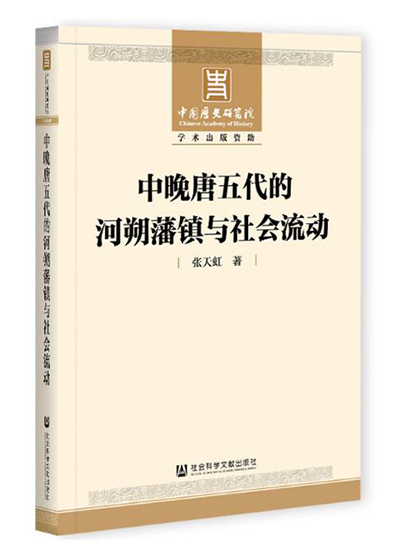Social mobility in Heshuo fanzhen

Heshuo Fanzhen and Social Mobility in the Middle and Late Tang Dynasty and the Five Dynasties
As typical separatistfanzhen[garrison] in the Tang Dynasty (618–907), Heshuo fanzhen [the three garrisons in the Heshuo region] received the most attention among all fanzhen in the Tang Dynasty, and was even used as a designation for fanzhen.
Heshuo Fanzhen and Social Mobility in the Middle and Late Tang Dynasty and the Five Dynasties, written by Zhang Tianhong, an associate professor from the School of History at Capital Normal University, looks into the Heshuo region under the fanzhen governance system during the middle and late Tang Dynasty and the Five Dynasties (907–960).
The book starts from “social mobility” to systematically explore the region where changeable relationships and unfixed identities made its elite group more vigorous, thus forming a talent advantage. It presents the economic, social, and cultural appearances and changes of the Heshuo region at the time.
The book probes the mobility of individuals or groups in social stratification from three aspects. Specifically, the composition of Heshuo fanzhen and the ups and downs of status among its members; whether and to what extent it can absorb “new blood” from the “common people” and accordingly dilute the flow in space. The book associates the spatial flow with the change of social class and stratification, not emphasizing spatial changes alone.
On the theme of social mobility of Heshuo fanzhen, the book researches the intergenerational rise and fall of scholar-officials in six chapters. Chapter one and two introduce the background of social mobility in Heshuo in the Tang Dynasty and the Five Dynasties. Given that a scientific division of social classes is the theoretical premise of social mobility studies, Zhang roughly divided the ranks of officials in the Tang Dynasty according to nine grades of official ranks, and then divided bureaucracy levels inside Heshuo.
Chapter three to six represent the core content, discussing the “Heshuo story”[the declining Tang court recognized the hereditary autonomy in Heshuo fanzhen] from the perspective of social mobility, and examining the promotion and demotion of the ruling class in Heshuo. In addition to overall studies, the author conducts a case study of ancient scholars “moving northward to Heshuo” to explore multiple factors affecting social mobility.
Quantitative analysis embodies the sociological turn of the book, contributing its most valuable part in studying social mobility in Heshuo. Zhang collects a total of more than 300 pieces of inscriptions on stone tablets pertaining to Heshuo fanzhen around the middle and late Tang Dynasties and the early Five Dynasties. After careful textual research one by one, 252 informative and reliable pieces of inscriptions were selected to serve as useful samples.
Feng Jinzhong is a research fellow from the Hebei Academy of Social Sciences.